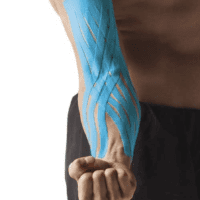Teenager Back Pain
Managing Teenager Back Pain: A Physiotherapist’s Guide
Teenagers often encounter spinal discomfort, posing a unique challenge for management. Their abundant flexibility, coupled with low muscle strength and posture control, renders them more susceptible to back and neck pain.
Encourage Regular Exercise
To thwart spinal pain in youth, it’s imperative to advocate for regular exercise and concentrate on upholding fitness and core stability control. Engaging in routine physical activity aids in fortifying supporting muscular structures and mitigates the likelihood of spine injuries. However, certain sports like gymnastics, cricket fast bowlers, and tennis escalate the prevalence of associated lumbar spine issues due to repetitive twisting and hyper-bending motions. But, in the vast majority, the risks can be minimised with appropriate exercise and load-management programs.

Seeking Professional Guidance
Severe conditions such as spondylolisthesis necessitate vigilant treatment from an experienced physiotherapist proficient in addressing such injuries. Fortunately, the majority of injuries are minor, self-restrained, and exhibit favourable responses to physiotherapy intervention.
Consultation with a Physiotherapist
Should your teenager encounter spinal discomfort, it is strongly recommended to seek consultation with a physiotherapist or a spinal specialist to pinpoint and address any deficiencies in this realm. Equipped with appropriate treatment and guidance, adolescents can effectively manage their spinal pain and sustain an active and healthy lifestyle.
New Research Perspective
Recent research underscores the pivotal role of early intervention and tailored physiotherapy programs in ameliorating adolescent spinal pain. Studies advocate for a multidimensional approach encompassing strength training, postural correction, and ergonomic modifications to alleviate discomfort and enhance functional outcomes.
Preventive Measures
In addition to targeted interventions, implementing preventive strategies can significantly reduce the incidence of adolescent neck and back pain. Encouraging teenagers to adopt ergonomic practices, maintain proper posture during activities, and limit sedentary behaviours can mitigate the risk of musculoskeletal strain and injury.
Ergonomic Tips for Teenagers
- Ensure proper desk and chair height to support neutral spine alignment during study sessions.
- Encourage regular breaks to stretch and mobilise stiff muscles, particularly during prolonged periods of sitting or screen use.
- Emphasise the importance of maintaining good posture while standing, walking, and participating in recreational activities.
- Provide guidance on lifting techniques to prevent excessive strain on the spine and surrounding structures during daily tasks and sports-related activities.
Conclusion
In conclusion, understanding and proactively addressing adolescent neck and back pain is imperative to foster optimal musculoskeletal health among teenagers. Through a concerted effort involving regular exercise, professional guidance, and evidence-based interventions, adolescents can mitigate the impact of spinal discomfort and embrace a life unhindered by pain.
What to Do?
To seek the professional advice of your physiotherapist and embark on a journey towards alleviating adolescent neck and back pain, take proactive steps today.
Related Articles
- Neck Pain: Causes and Treatment Options
- This article discusses common causes of neck pain in teenagers and provides insights into effective treatment strategies.
- Youth Spinal Injuries: Understanding and Preventing Back Pain
- Learn about common back injuries in youth sports and how to prevent them to ensure a healthy athletic experience for teenagers.
- Understanding Spondylolisthesis: A Guide for Teenagers and Parents
-
-
- This article explains what spondylolisthesis is, its symptoms, and available treatment options tailored for teenagers and their parents.
-
- Managing Adolescent Posture Concerns: Tips and Exercises
- Discover practical tips and exercises to improve posture in adolescents, reducing the risk of spinal issues and promoting overall well-being.
- Effective Physiotherapy for Adolescent Scoliosis
- Explore how physiotherapy can effectively manage scoliosis in adolescents, enhancing spinal health and quality of life.
- Preventing Neck Sprain in Teenagers: Advice from Spinal Physiotherapists
- Get professional advice on preventing neck sprains in teenagers through proper posture and injury prevention techniques.
- Understanding Text Neck: Causes, Symptoms, and Solutions for Teenagers
- Learn about the dangers of text neck in teenagers and practical solutions to alleviate symptoms and promote spinal health.
- Treating Adolescent Neck Headaches: Physiotherapy Approaches
- This article discusses physiotherapy approaches to treating neck headaches in adolescents, providing relief and improving quality of life.
- Managing Sacroiliac Joint Pain in Youth: Physiotherapy Solutions
- Discover how physiotherapy can effectively manage sacroiliac joint pain in youth, restoring mobility and reducing discomfort.
- Youth Cricket: Preventing Lower Back Pain in Fast Bowlers
- Explore specific strategies to prevent lower back pain in youth cricket fast bowlers, promoting spinal health and athletic performance.
Common Adolescent Spinal Injuries
Lower Back (Lumbosacral Spine)
Midback (Thoracic Spine)
Neck (Cervical Spine)
For specific advice regarding youth neck or back pain, seek the professional advice of your trusted spinal physiotherapist or doctor.
















































































